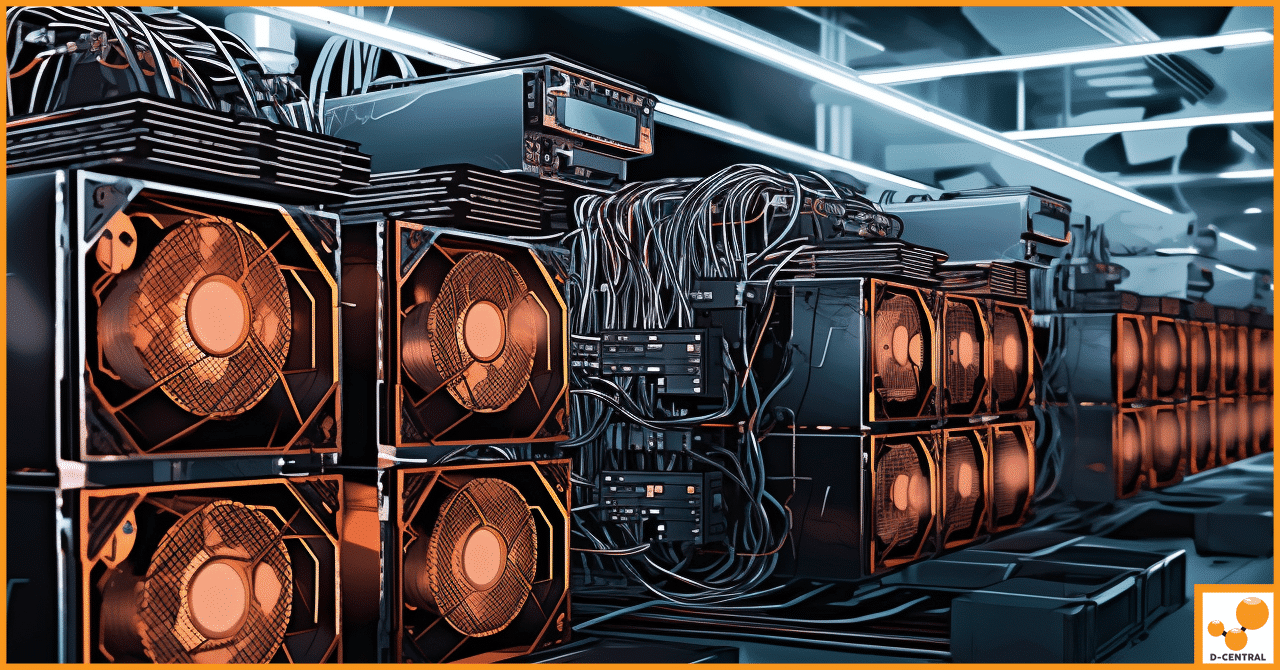
Unlocking the Power of Bitcoin Through Its Network Effects
Bitcoin, the first and most renowned cryptocurrency, has revolutionized the financial landscape since its inception in 2009. Created by an
4479 Desserte Nord Autoroute 440, Laval, QC H7P 6E2

In the fast-paced and financially intensive world of cryptocurrency mining, securing your investment becomes paramount. This is where Application-Specific Integrated Circuit (ASIC) warranties come into play. An ASIC warranty is not just a promise of repair or replacement; it represents a crucial layer of financial and operational security for mining hardware. These warranties ensure that the high-cost mining equipment operates as expected for a specified period without burdening the owner with unexpected repair costs if a malfunction occurs.
However, traditional warranty services, especially those from high-volume manufacturers like Bitmain, often come with their own set of challenges. These typically include long wait times for repair and significant shipping costs that can make the warranty service less appealing. In many cases, direct service options such as those provided by companies like D-Central offer a more cost-effective and timely alternative. These services can bypass the lengthy processing times seen in traditional warranty claims, providing repairs and returning miners to operational status in a matter of days rather than months. This rapid turnaround is vital in an industry where every minute of downtime translates directly into lost revenue.
The decision between relying on traditional warranty services and opting for direct service solutions should be informed by a thorough analysis of both the upfront and hidden costs associated with each option. Understanding these nuances will enable miners to make choices that align best with their operational objectives and financial constraints, ensuring that their mining apparatuses are not just purchased but are truly maintained for peak performance.
An ASIC (Application-Specific Integrated Circuit) warranty is a manufacturer’s assurance that the cryptocurrency mining hardware will function as advertised over a specified period. This warranty is critical in the crypto mining industry due to the substantial investment required to purchase and operate these machines. If an ASIC fails, the warranty ensures that the miner can be repaired or replaced without significant expense to the owner, thereby protecting the miner’s investment and operational capabilities.
The significance of an ASIC warranty extends beyond just financial protection. It reflects the manufacturer’s confidence in the quality and reliability of their products. A robust warranty often correlates with well-constructed hardware that can endure the demanding conditions of continuous mining operations. Moreover, warranties are pivotal in maintaining customer trust and fostering brand loyalty in a competitive market.
Standard Terms Included in ASIC Warranties
These terms are standard across the industry, but variations exist depending on the manufacturer and the specific model of ASIC miner. Miners should thoroughly review the warranty documentation provided with their hardware to ensure they understand the full scope of their coverage. This understanding not only helps in making informed purchasing decisions but also in managing the mining operation to maximize uptime and profitability while ensuring compliance with warranty requirements.
ASIC warranties play an indispensable role in safeguarding the investments of cryptocurrency miners by mitigating the risks associated with hardware failures. By comprehensively understanding the terms and conditions of these warranties, miners can optimize their operations and navigate the complexities of cryptocurrency mining with greater confidence and security.
ASIC warranties are essential in the cryptocurrency mining industry, providing security and reliability to miners investing in expensive equipment. While these warranties offer significant advantages, they also come with inherent drawbacks that can affect operational efficiency and cost-effectiveness.
While ASIC warranties provide essential financial and operational security for cryptocurrency miners, the potential drawbacks—especially related to service times and associated costs—can diminish their value. Miners must weigh these pros and cons carefully, considering both the terms of the warranty and the logistics of service fulfillment. In many cases, exploring direct service options with quicker turnaround times might offer a more practical solution, ensuring that mining operations continue smoothly and more cost-effectively.
In the competitive world of cryptocurrency mining, the choice between traditional warranty services and direct service options is crucial. This section delves into a case study comparison between traditional warranty services offered by manufacturers like Bitmain and direct service providers such as D-Central. We’ll explore differences in turnaround times, costs, and customer satisfaction to highlight scenarios where direct service may offer superior benefits.
Traditional Warranty Service:
Direct Service Provider:
When choosing between traditional warranty and direct service options for ASIC mining equipment, miners must consider more than just the upfront costs. The faster turnaround times and generally lower total costs associated with direct services like those offered by D-Central can outweigh the benefits of traditional warranty coverage, especially when considering the high opportunity costs associated with extended downtime. This analysis suggests that in many scenarios, opting for direct services will ensure higher profitability and better operational continuity in the dynamic cryptocurrency mining industry.
When investing in ASIC mining equipment, the warranty can be as crucial as the hardware itself. Choosing the right warranty provider is paramount to ensuring that your mining operations run smoothly and remain profitable. Here are the key factors to consider and the importance of understanding the warranty claim process.
Choosing the right ASIC warranty provider involves careful consideration of their reputation, the direct feedback from other customers, and the specific terms laid out in their service level agreements. Fully understanding the warranty claim process—including necessary documentation and expected timelines—can further ensure that you maximize the benefits offered by your warranty. This diligence will help secure your investment and enhance your mining operation’s efficiency and profitability.
Maintaining your ASIC miners properly is critical to ensuring their longevity and peak performance. This involves a mix of routine DIY maintenance that owners can perform and, at times, professional services when more complex issues arise. Understanding when and how to engage in each type of maintenance can significantly reduce the need for warranty claims and extend the operational life of your mining hardware.
1. Cleaning:
2. Firmware Updates:
3. Basic Hardware Checks:
1. Complex Repairs:
2. Firmware Problems:
3. Extensive Damage:
1. Expertise and Reliability:
2. Cost Considerations:
3. Turnaround Time:
1. Risk Evaluation:
2. Cost Efficiency:
Effective maintenance of ASIC miners involves a balanced approach between DIY maintenance for routine care and professional services for more complex issues. By understanding when to employ each, operators can extend the life of their equipment, maximize uptime, and avoid unnecessary expenditures.
As we’ve explored the various aspects of ASIC warranties and service options, it’s clear that the choice between warranty coverage and direct service solutions is not merely about cost but also about ensuring operational continuity and maximizing profitability. Here’s a recap and some final recommendations to help miners make informed decisions:
Selecting an ASIC warranty provider should be done with careful consideration. A robust warranty not only protects against unforeseen repairs but also reflects the manufacturer’s confidence in their product’s reliability. Given the potential costs associated with mining equipment failures, having a warranty can significantly mitigate financial risk.
Miners should evaluate both traditional warranty services and direct service alternatives such as D-Central, which may offer faster and possibly more cost-effective solutions. Direct service providers can be particularly valuable in scenarios where warranty service centers have long turnaround times that could lead to missed mining opportunities.
Finally, miners are encouraged to actively engage with the community and utilize available resources to make well-informed decisions. By understanding the nuances of each warranty and service option and evaluating them against your specific operational needs, you can better navigate the complexities of ASIC mining maintenance. This proactive approach not only safeguards your equipment but also enhances the efficiency and profitability of your mining operations.
By following these guidelines, miners can effectively balance the benefits of warranty coverage against the practical advantages of direct service options, ensuring that their mining operations are both profitable and sustainable.
What is an ASIC warranty?
An ASIC warranty is a guarantee issued by the manufacturer, ensuring that the cryptocurrency mining hardware will operate as intended for a specific period. It covers repairs or replacements needed due to manufacturing defects, offering miners financial and operational security.
What challenges arise from traditional ASIC warranty services?
Traditional ASIC warranty services, especially from major manufacturers like Bitmain, often experience long wait times for repairs and significant shipping costs. These issues can reduce the appeal of warranty services due to the financial and operational burdens they impose.
What are direct service options for ASIC miners?
Direct service options, such as those provided by companies like D-Central, offer a more efficient alternative to traditional warranty services. These options can significantly reduce turnaround times for repairs, typically ranging from days to weeks, thereby minimizing revenue loss from downtime.
What factors should miners consider when choosing between warranty services and direct services?
Miners should consider upfront and hidden costs, turnaround times, and the potential revenue loss during downtime. Understanding these factors helps align service choices with operational and financial objectives.
What are the advantages of having an ASIC warranty?
The primary benefits include cost savings on repairs, replacement guarantees for irreparable miners, and protection of the miner’s investment and operational productivity.
What are common drawbacks of ASIC warranties?
The major drawbacks include long wait times for repairs at warranty centers, high shipping costs for sending units for repair, and the opportunity costs associated with miner downtime.
What scenarios may make direct service options more appealing than warranty coverage?
Direct services may be preferable during high cryptocurrency market prices where downtime costs are significant, when miners are located closer to direct service providers, after the warranty period ends, or for complex issues not covered by the warranty.
How should miners evaluate ASIC warranty providers?
Evaluating ASIC warranty providers involves considering their reputation, customer feedback, service level agreements (SLAs), and understanding the warranty claim process, including necessary documentation and the timeline for repairs or replacements.
What maintenance tasks can miners perform themselves?
Miners can perform routine maintenance tasks such as cleaning, firmware updates, and basic hardware checks to ensure the longevity and optimal performance of their ASIC miners.
When should miners seek professional services for maintenance?
Miners should seek professional services for complex repairs beyond basic troubleshooting, issues requiring specialized equipment, firmware problems, and extensive damage due to accidents.
DISCLAIMER: D-Central Technologies and its associated content, including this blog, do not serve as financial advisors or official investment advisors. The insights and opinions shared here or by any guests featured in our content are provided purely for informational and educational purposes. Such communications should not be interpreted as financial, investment, legal, tax, or any form of specific advice. We are committed to advancing the knowledge and understanding of Bitcoin and its potential impact on society. However, we urge our community to proceed with caution and informed judgment in all related endeavors.
Related Posts

Bitcoin, the first and most renowned cryptocurrency, has revolutionized the financial landscape since its inception in 2009. Created by an

The landscape of Bitcoin mining has undergone a remarkable transformation since the inception of this groundbreaking digital currency in 2009.

Bitcoin is created and secured by mining, which involves solving complex mathematical puzzles using powerful computers. This process consumes a